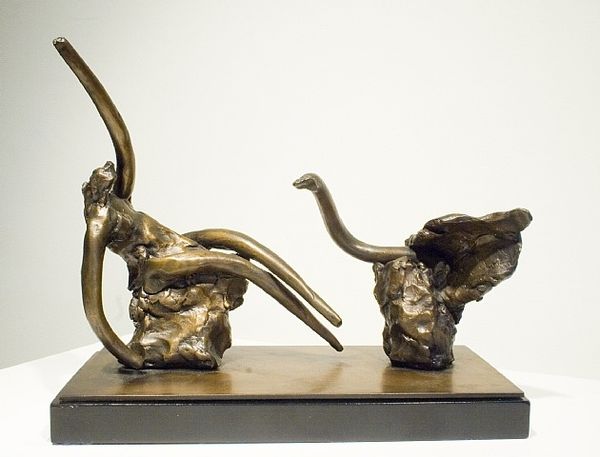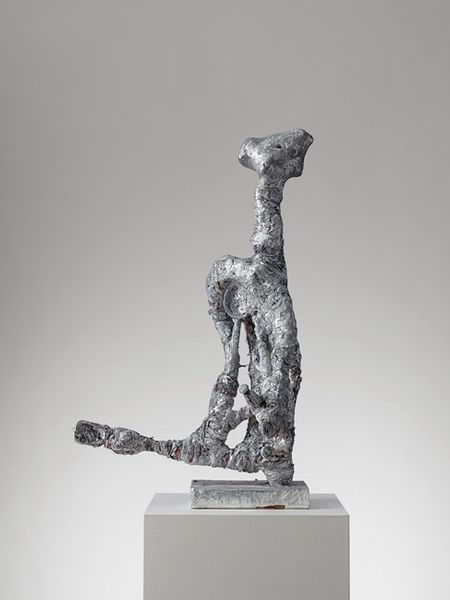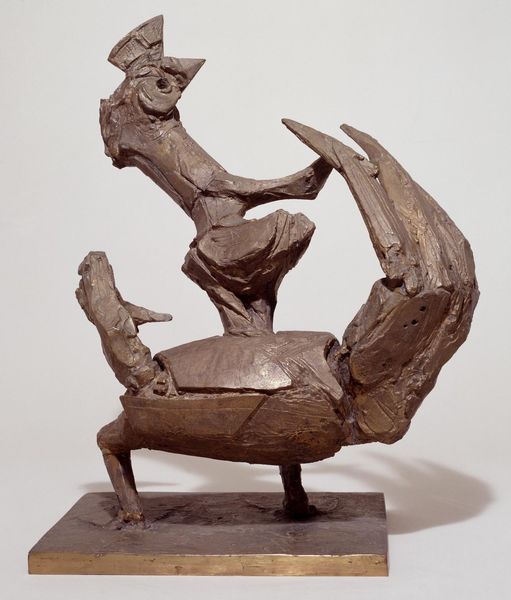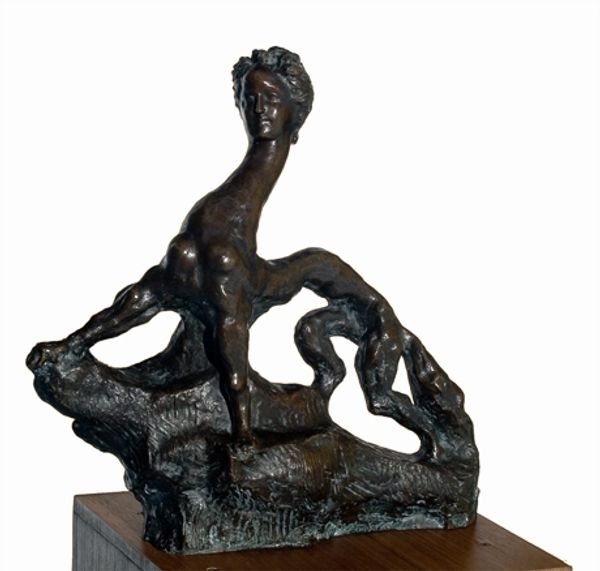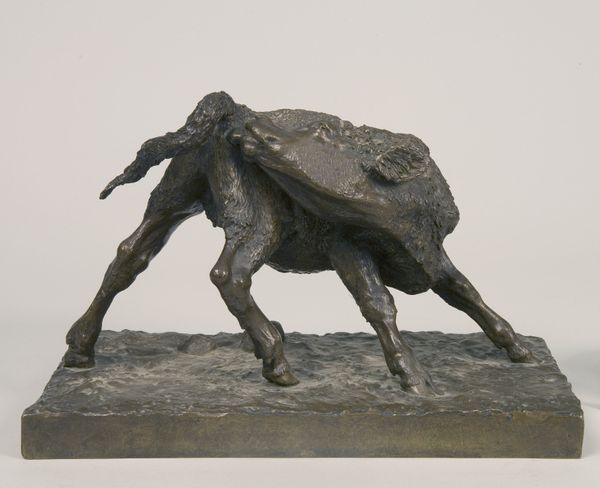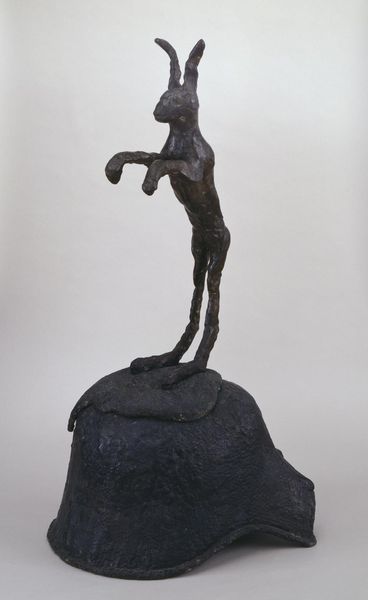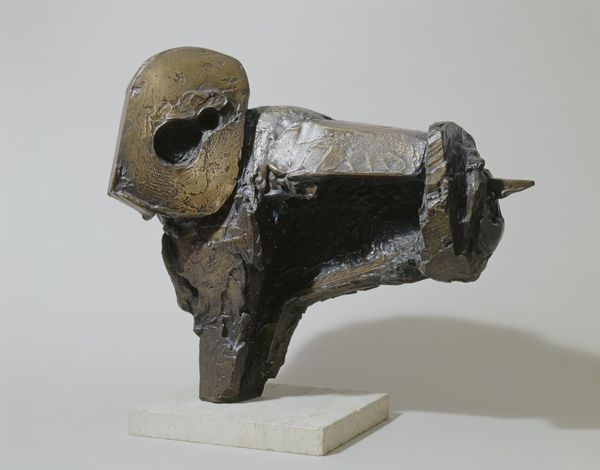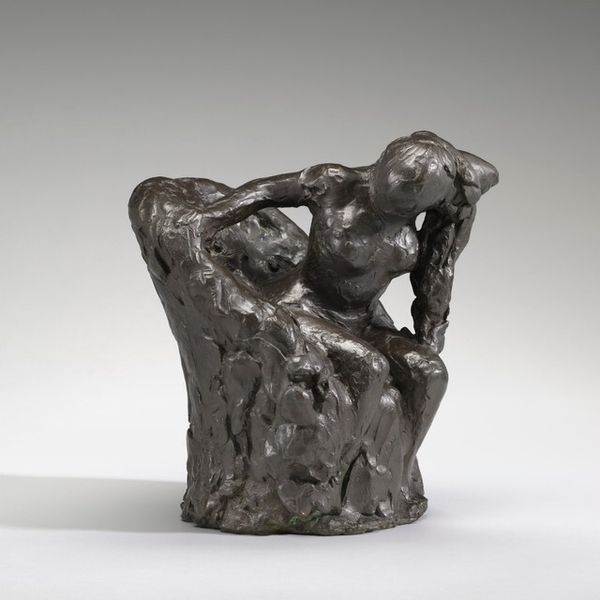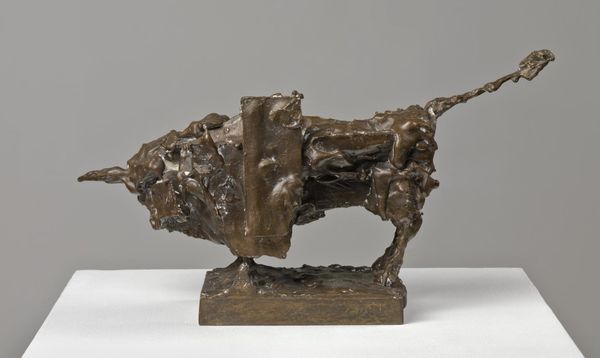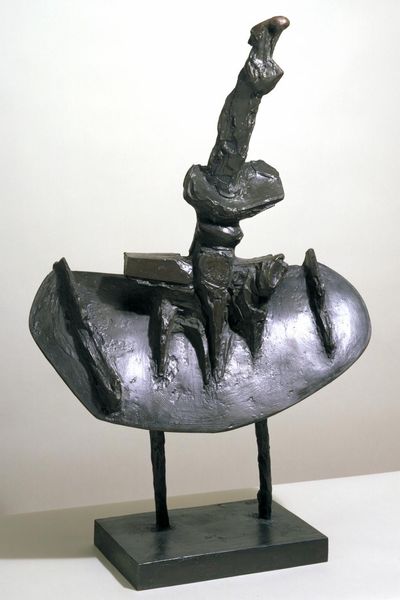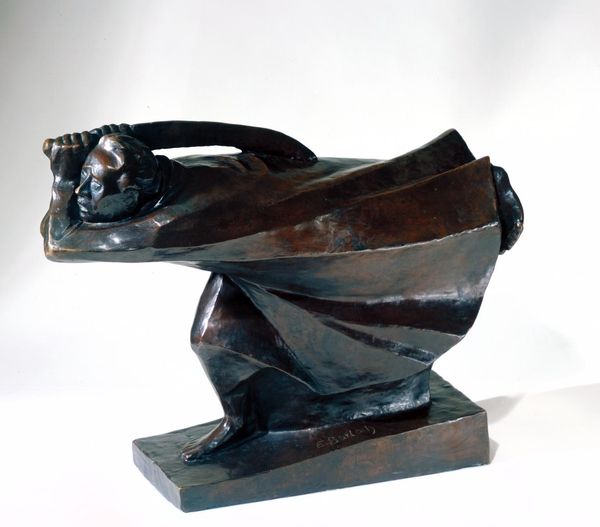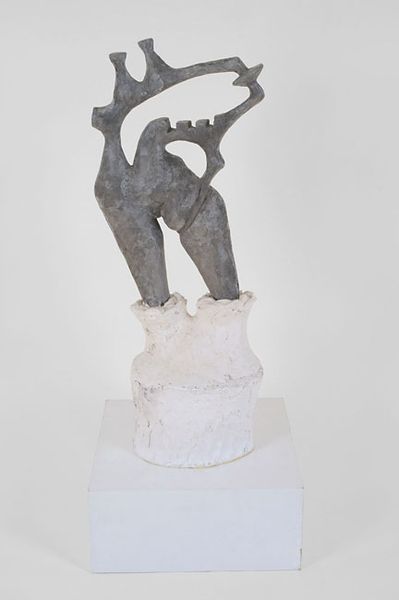
Dimensions: object: 170 x 460 x 230 mm, 6 kg
Copyright: © The estate of Bernard Meadows | CC-BY-NC-ND 4.0 DEED, Photo: Tate
Editor: This is Bernard Meadows' "Fallen Bird," a bronze sculpture. It definitely evokes a sense of vulnerability. How would you interpret the form and texture in this piece? Curator: Notice how Meadows uses rough, almost brutal textures to convey a sense of physical suffering, and how the form—the awkward angles and the seemingly broken elements— speaks to a loss of balance, a disruption of natural order. The interplay of light and shadow across these surfaces further emphasizes its emotional weight. Editor: So, the intentional roughness isn't just a stylistic choice? Curator: Precisely. The texture serves a critical function in communicating the sculpture's underlying themes. It’s less about realistic representation and more about evoking a visceral, emotional response through purely formal means. Editor: That's fascinating; I'll definitely look at texture differently from now on. Curator: Indeed, the formal elements of art can be powerful carriers of meaning.
Comments
Join the conversation
Join millions of artists and users on Artera today and experience the ultimate creative platform.
tate 7 months ago
⋮
Meadows explained that his work was ‘all about the human condition. The crabs, and the birds, and the armed figures, the pointing figures, are all about fear ... perhaps not fear, it’s vulnerability’. With Fallen Bird this fear and vulnerability is communicated through the spiky, elongated forms of a nestling which has fallen on to the ground, its legs upright and disjointed. Gallery label, February 2010
